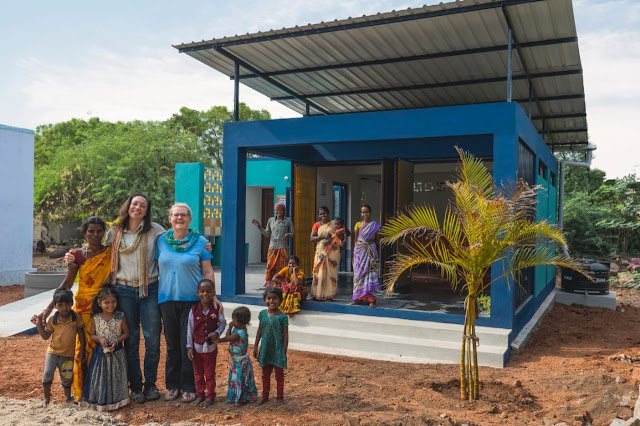HOW MUCH IS A HUMAN?
“The construction of
housing, commercial property, and infrastructure projects—roads, bridges,
tunnels, railways, airports—for both the private and public sectors is one of
the biggest industries in the world. It contributes around 10 per cent of world
GDP, employs 7 per cent of the global workforce, and consumes around 20 per
cent of the world’s energy (and generates a third of the world’s CO2
emissions). So important is the construction industry that it is widely seen as
the best indicator of a national economy’s health” (https://cup.columbia.edu/book/the-economics-of-construction/9781788210157).
The aganwadi we have been designing is currently being costed at what is called the Concept Design stage. This is where an estimate is put together, based on current
market prices, to determine if the construction costs will come in around the
client’s budget or not. It significnatly mitigates the client's risk moving forward to more detailed design documentation. TAP’s budget is
$12,000AUD. Based on cost estimates of other anganwadi
built in the area we will spend approximately 5 lakh – which is 500,000 rupees
and nicely aligns with our budget.
If we then consider a typical anganwadi ranges from 50 to 80
square meters in size, we can conclude that the building rate (or construction
cost) per square meter is approximately $165AUD.
Yes, only $165AUD a square meter!
Now, I will delve further, for those of my friends and colleagues who are economically
inclined or intrigued:
- - In the early 2000s, in the US And the UK we used to work on a square meter rate of approximately $1,500USD for interior fit out projects.
- - In Melbourne around 2009-2011, we used to work on a square meter rate of $2,000 to 2,500AUD for standard construction projects.
- - In Broome, Western Australia from 2012 to 2016 we worked on square meter rates of $3,500 to $4,000 for remote projects.
- - Recently in Darwin, we have been working on square meter rates around $4,500AUD per square meter for typical construction project near urban centres.
That is almost 30 times the Indian rate per square
meter. Incredible! Let that sink in…
What does it mean? I don’t
know really, but I’m fascinated to consider what this means with regards to humanity globally. It obviously depends on how you look at the numbers (any economist or
statistician will tell you this).
Here’s how I have thought about this extreme
discrepancy and I am open to further thoughts on the matter as I am by no means knowledgeable
in this area:
If raw construction material costs are driven by a global
market – for example structural steel today is approximately 250 rupees per
kilogram – then it “should” be close to the same cost globally with exchange
rates applied respective to each country.
So, one could concur that the main difference lies in the labour rates
of each country (not solely, I know, but I’m trying to keep things simple as this is
just meant to be a fun exercise in thinking about the cost of a building globally).
Now, after considering the above, think about how much you
value physical and mental labor. Consider how this particular “resource,” one
that is literally the expending of effort and energy by a human body, is quantified
and applied by individual workplaces and governments.
Why have I never questioned this before?
Humans are a resource, no?
So, why is
our value somehow separated and determined by our employers, with some extremely
minimal oversight by our respective countries?
Is this a good or a bad
thing?
How would it be categorised and
then quantified in a free market?
How
would this effect the striking differences currently in place between a developing
and developed country?
I’ll leave you to ponder this….as will I!
(If you wish to familiarize
yourself with the difference between developing and developed countries: https://study.com/academy/lesson/economic-inequality-differences-in-developed-and-developing-nations.html)



Comments
Post a Comment